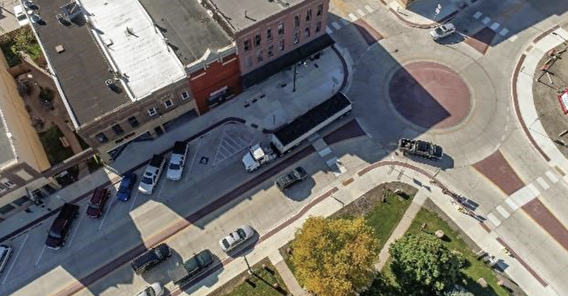
In small cities where highways double as commercial main streets, Complete Streets projects can be challenging for businesses. University of Minnesota researchers investigated the economic effects of such projects in Minnesota and developed evaluation metrics to assess and communicate the impacts.
Complete Streets policies encourage the design of a safe and functional transportation system for all users. Elements such as sidewalks, bike lanes, and pedestrian crossings are commonly associated with the approach. Other studies have looked at metropolitan areas, but smaller communities and their businesses have largely been unexplored.
The new study, sponsored by MnDOT, found impacts in several categories:
- Property tax revenues increased in some cities. This indicates increased economic activity—Complete Streets may alter business and city practices and bring in additional investments.
- There was no significant impact on gross sales.
- There was a slight decrease in the number of businesses.
- Local stakeholders had mixed perceptions about economic impacts, safety, and business accessibility.
Future reconstruction projects could benefit from the variety of metrics and data sources developed by the team. For future projects, researchers made recommendations in three areas:
- Developing and implementing Complete Streets projects. Align reconstructions with other city investments to minimize disruptions and maximize efficiencies in improvements. Consider grants or other alternative funding mechanisms to decrease the financial burden on businesses.
- Engaging and communicating with local businesses. Clearly and consistently communicate with local businesses throughout the project.
- Measuring the economic impact of projects. Develop project-specific evaluation plans to collect metrics and other data before, during, and after Complete Streets reconstruction.
—Megan Tsai, contributing writer
Learn more: